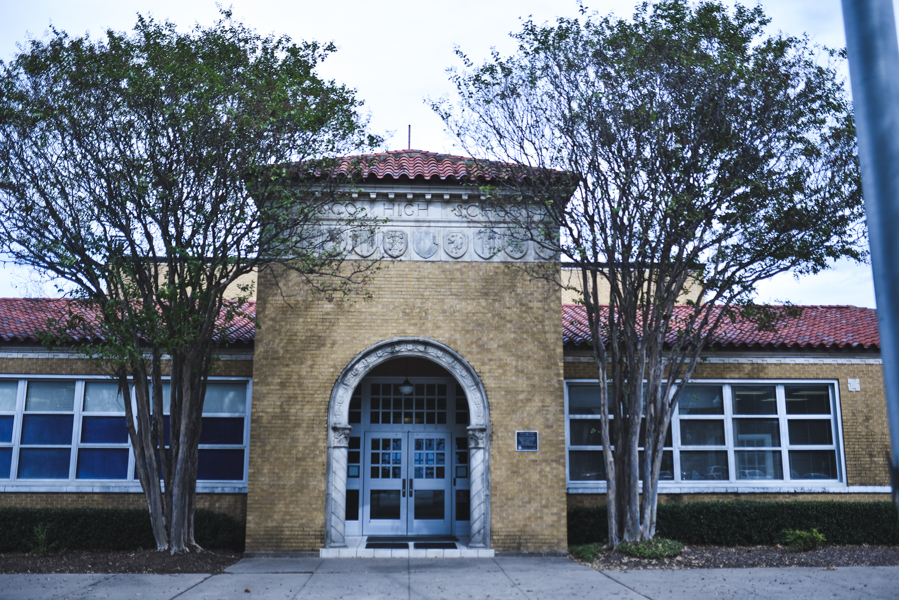For more than 100 years, Frisco Independent School District has had a presence on Maple Street in downtown. It began as the original site of Frisco High School, and over the years has undergone several stages of construction and renovation. In 1937, the three story building on Maple Street was demolished with the current building constructed and serving as Frisco High School until 1973. In 1997, the building was renovated once again and made the Student Opportunity Center.
Chapter 1: A history and an overview
October 16, 2019
In 1939, a single story mission style school was built on Maple Street serving all grade levels, replacing Frisco’s single three-story school. The Depression era public works project continues to serve all grade levels to this day.
Students in the district attend the SOC for a multitude of reasons, including, but not limited to: behavioral issues, failing classes, or struggling with the environment on other campuses. Former SOC principal Sue Kirk explains that there is not just one specific reason for students to study at the SOC.
“We have students over here that just haven’t made good choices and didn’t do the work they were supposed to and they’ve gotten behind,” Kirk said. “We’ve got students that maybe have been in the hospital and gotten behind for that reason. We’ve got students here that maybe came in from another state and the requirements were so different that when they got here as a senior, they needed a lot more credits than what the campus could get them to graduate on time. We’ve got students here that are really kind of school-phobic, you know, large crowds, for example, are hard on them, so we can bring them over here.”
The SOC consists of two programs. At the Academic Academy, students who are behind on credits have a program to catch up on the path to graduation. The discipline alternative education program (DAEP) is for students at the SOC for repeated violations of the Student Code of Conduct. Within this program the PAC program targets 9-12 graders and the KEYS program targets grades 1-8.
Although the SOC is not a traditional high school campus, the center adapts school concepts familiar to students in a way that allows students to excel.
“At lunches as long as the students are behaving, they can talk quietly, just like you can on a regular campus,” Kirk said. “We feel like that’s when we give them a break. In the afternoon the students have their advisory period. We do the drug and alcohol program [for students who need it]. We also have a social, emotional learning teacher that works with students and does lessons. We do all types of lessons with the students during the advisory period.”
The SOC places an emphasis on individual learning as class settings have a ratio of about eight to nine students to one teacher.
“In fact, more times than not the students’ academics are even better over here, because we do have such small classes,” Kirk said. “By law, you have to have a ratio of no more than 10 to one. Having 10 students in a classroom with a teacher is a lot different than having 25 or 30 students in a classroom, so the teachers can check in a lot quicker. They can see the students not understanding something; it’s just a lot easier when you’ve got small classes like that.”
